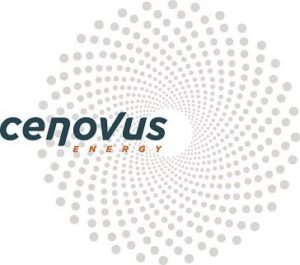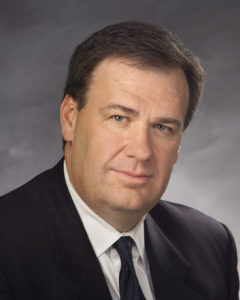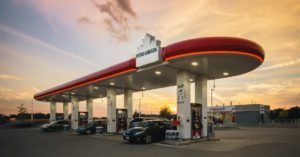Profits earned by foreign direct investors on their assets in Canada were up $2.8 billion, led by the energy sector. Statistics Canada report on balance of payments.
Statistics Canada Report on balance of international payments- 30 August 2022
In a column earlier this year, Gordon Laxer argued that Alberta’s inquiry into foreign influence should also have examined the foreign influence in the Canadian oilpatch. This post examines the ownership of the Big Four oilsands producers using current data from Thomson Reuters’ Refinitiv. In an earlier post first half financial results of these companies was compared against bank profits.
As the tables indicate, the top investors are mostly North American with Canadian bank subsidiary iinvestment management firms holding a small portion of the shares. I also disclose the holdings of the Alberta Investment Management Corporation (AIMCo). Except for Imperial, the top ten holders hold less than 50 per cent of the shares of these oilsands producers. There are however significant differences in top ten ownership which with an examination of the structure of boards of directors, sheds more light on the “Canadian-ness” of these respective firms.
Apart from Imperial Oil, three-quarters owned by Exxon-Mobil, major investors in the Big Four are traditional “institutional investors” such as Vanguard, Fidelity, BlackRock, RBC Investment Management and TD Investment Management. These investment managers aggregate both institutional funds for pension funds, mutual fund complexes, or foundations and individual mutual fund or exchange-traded funds offered to the public.
CENOVUS
Top investors in Cenovus are two related parties – the Capital World investors group. They collectively own nearly 12 per cent of the shares of Cenovus. Capital Group is headquartered in Los Angeles, privately owned, and manages $2.7 trillion U.S. in assets for individuals and institutions. Other key institutional investors include goliath institutional investors Fidelity ($9.9 trillion- U.S.) headquartered in Boston and Vanguard Group ($7-trillion-U.S.) from Malvern, Pennsylvania. Vanguard is the world’s largest issuer of mutual funds and Fidelity manages investments for over 40 million individuals and employee pension programs. Two Canadian bank subsidiaries hold 4.6 per cent of Cenovus. If Fidelity Investments Canada ULC is added to the Canadian bank holdings, “Canadians” own perhaps 5.4 per cent of Cenovus or 16 per cent of the top ten holdings. Of the other investment firms controlling 29 per cent, the others are headquartered in New York (Soroban), Fort Lauderdale (GQG Partners), and Boston (Wellington).
|
CENOVUS |
|
|
Institution/Individual |
Per cent Owned |
|
Capital World Investors |
6.21 |
|
Capital Research Global Investors |
5.54 |
|
Fidelity Management & Research Company |
5.05 |
|
Soroban Capital Partners LLP |
2.55 |
|
The Vanguard Group, Inc. |
2.06 |
|
Fidelity Investments Canada ULC |
1.8 |
|
TD Asset Management Inc. |
1.77 |
|
GQG Partners LLC |
1.63 |
|
RBC Dominion Securities, Inc. |
1.23 |
|
Wellington Management Company, LLP |
1.13 |
|
Total Top Ten |
28.97 |
|
AIMCo |
0.28 |
However, if one looks for any connection between these huge institutional investors and Cenovus’s board of directors, one does not see it. Instead, the board is dominated by Canadian residents with oil sector experience. The board also reflects recent mergers of Cenovus. Four directors are affiliated with Hong Kong-based CK Hutchinson Holdings (Canning Hok is from Hong Kong) representative of the former controlling interest in Husky merged with Cenovus in 2020-21. Eva Kwok is a Vancouver resident and is CEO of a private investment holding company, Wayne Shaw a lawyer who served on Husky’s Board, and Frank Sixt a Quebec lawyer affiliated with the CK Hutchison Holdings are others representing the financial interests of billionaire Li Ka Shing. Other non-residents include Rhonda Zygocki who joined the board in 2015 having spend 34 years at Chevron. Chevron’s Foster Creek assets were purchased by the company in 2017. Other Americans on the board include Keith Casey an petroleum engineer and Richard Marcogliese who worked with Exxon Mobil and the Carlyle Group. Of the twelve directors, eight are Canadian residents three with extensive experience in the oil patch including the CEO Andre Pourbaix, the Chairman, Keith MacPhail formerly the Chairman of NuVista Energy, and Hal Kvisle former CEO of TransCanada corporation. From Montreal is Claude Mongeau is the former CEO of CN Railways and Jane Kinney a CPA, is from Toronto,
The Canada Business Corporation Act requires only one-quarter of directors must be resident Canadians.
Other than the Husky-Hutchison connection whose ownership could be masked through institutional investors, there does not appear to be representatives affiliated with the big institutions on the board. The board is composed of seasoned, blue-chip directors with extensive experience in the energy or energy transportation industry, transportation, finance and law. In short from an institutional shareholder perspective, the board is in “safe hands”
CANADIAN NATURAL RESOURCES LIMITED
What is most striking of CNRL’s top owners is the 21.88 per cent share owned by the Capital Group. This common ownership might be a prelude to a business combination between CNRL the biggest energy firm by market capitalization and Cenovus the third largest Canadian energy company. Unlike Cenovus where top ten ownership constitutes less than 30 per cent of the shares, CNRL’s top ten owners’ control 44 per cent of the common stock. Again U.S. investment managers dominate the list. However, five institutional investors from Canada do control nearly 12 per cent of the company’s shares. It is important to note that the next ten institutions are mainly Canadian including Bank of Nova Scotia, CIBC, and Mackenzie Investments.
| Canadian Natural Resources Ltd. | |
| Institution/Individual | Per cent Owned |
| Capital World Investors | 12.47 |
| Capital Research Global Investors | 9.41 |
| Fidelity Management & Research Company | 6.96 |
| The Vanguard Group, Inc. | 3.62 |
| RBC Global Asset Management Inc. | 2.56 |
| Fidelity Investments Canada ULC | 2.37 |
| N. Murray Edwards | 1.91 |
| RBC Dominion Securities Inc. | 1.8 |
| CPP Investment Board | 1.73 |
| BMO Capital Markets | 1.72 |
| Total Top Ten | 44.55 |
| AIMCO | 0.35 |

CNRL’s board’s membership shows a extremely strong Calgary bias. Of the twelve directors, an astounding eight hail from Calgary if we include the Executive Chairman and company founder N. Murray Edwards. Edwards’ residency technically is in St. Moritz Switzerland but he spends considerable time in Calgary overseeing operations of the company. Edwards personally held 21.5-million shares at the end of 2021. Other Calgarians include: Steve Laut, the Executive Vice-Chairman with holdings of 1.18-million shares; Tim McKay the company’s CEO; Elizabeth Cannon, former President of the University of Calgary; David Tuer former President and CEO of PanCanadian Petroleum; Dawn Farrell former CEO of TransAlta and recently appointed President of TransMountain Pipeline; Chris Fong a former RBC investment banker; and Wilf Gobert a veteran of the Calgary oilpatch. Rounding out the group of Canadians include former New Brunswick premier Frank McKenna and Anne Verschueren, the former president of Home Depot Canada. The sole non-resident is Gordon Giffin former U.S. ambassador to Canada.
While institutional ownership includes American institutions, in the case of CNRL there is a very strong following by Canadian institutions and there is likely widespread Alberta and Canadian institutional and retail ownership making CNRL much more “Canadian” than Cenovus. CNRL, unlike its peers, features significant ownership stakes on the board of directors (Edwards, Laut).
IMPERIAL OIL
Imperial Oil is three-quarters owned by Exxon Mobil. Decision-making is clearly concentrated in Arlington Texas, world headquarters of Exxon-Mobil where capital deployment decisions are made. First Eagle Investment manages about $121 billion U.S. out of New York. Its website reports the firm “manages equity, fixed income and currencies, alternative credit, and real assets.” Artisan Partners manages $130-billion U.S. from Milwaukee and bills itself as an “activist investor.” T. Rowe Price, with $1.38-trillion U.S. in assets under management is an “independent” investment manager headquartered in Baltimore. Rowe also follows an active management approach. Besides RBC Global Investment Management, Connor Clark and Lunn, a small Vancouver-based boutique with 0.4 per cent of the shares, provides “professional asset management services for pension fund sponsors, group retirement plans, governments, corporations, First Nations and not-for-profit organizations.” CCL manages $51-billion in assets.
|
IMPERIAL OIL LTD. |
|
|
Institution/Individual |
Per cent Owned |
|
Exxon Mobil |
74.13 |
|
First Eagle Investment Management LLC |
3.89 |
|
Fidelity Management & Research Company LLC |
3.72 |
|
GQG Partners LLC |
1.55 |
|
RBC Global Asset Management Inc. |
1.17 |
|
The Vanguard Group Inc. |
1.09 |
|
Artisan Partners Limited Partnership |
0.99 |
|
BlackRock Institutional Trust Company N.A. |
0.72 |
|
T. Rowe Price Associates, Inc. |
0.72 |
|
Connor, Clark & Lunn Investment Management Ltd. |
0.4 |
|
Total Top Ten |
88.38 |
|
AIMCo |
0.1 |
 Imperial has a small board with five “independent” directors and 2 directors either in management or tied to the majority owner of Imperial Oil. Independent directors include: Calgarian David Cornhill a founding shareholder of Altagas; Miranda Hubbs a former investment manager based in Toronto; David Sutherland from Arizona, the former CEO of interprovincial Steel (a Regina steel producer now owned by Ruddian company Evraz Ltd); Toronto-based Krystyna Hoeg a former CEO of Corby Distillers; and Jack Mintz of Calgary a retired academic and corporate director. The non-independent directors include Bradley Corson the CEO of Imperial and Matthew Crocker from Texas who is the senior vide-president of Exxon Mobil’s Fuels & Lubricants Company. All directors have nominal holdings with share holdings of less than $5-million. This is an enterprise closely run from Texas.
Imperial has a small board with five “independent” directors and 2 directors either in management or tied to the majority owner of Imperial Oil. Independent directors include: Calgarian David Cornhill a founding shareholder of Altagas; Miranda Hubbs a former investment manager based in Toronto; David Sutherland from Arizona, the former CEO of interprovincial Steel (a Regina steel producer now owned by Ruddian company Evraz Ltd); Toronto-based Krystyna Hoeg a former CEO of Corby Distillers; and Jack Mintz of Calgary a retired academic and corporate director. The non-independent directors include Bradley Corson the CEO of Imperial and Matthew Crocker from Texas who is the senior vide-president of Exxon Mobil’s Fuels & Lubricants Company. All directors have nominal holdings with share holdings of less than $5-million. This is an enterprise closely run from Texas.
SUNCOR
Suncor’s top ten ownership is more widely distributed than the other firms with only 24 per cent of the firm controlled by ten institutions. The list of institutions is similar to the other companies with some additions. Dodge & Cox is an American investment manager located in San Francisco which has $371-billion U.S. assets under management. It is “one of the world’s largest independently owned investment firms.” Sanders Capital LLC is based in West Palm Beach, controls over $70-billion U.S. and believes “investors systematically overreact to adversity. This behavioral bias (known as loss aversion) unduly depresses asset prices, thereby, producing investments with above-average returns.” Mackenzie Financial, a part of the Power Corporation Group of companies (Montreal’s Desmarais family), manages $205-billion in assets for institutions and individuals. 1832 Asset management LLP is part of Scotiabank’s wealth management division which oversees $419-billion in assets.
|
SUNCOR INC. |
|
|
Institution/Individual |
Per cent Owned |
|
Vanguard Group Inc. |
3.63 |
|
Dodge & Cox |
3.05 |
|
Fidelity Management and Research Company LLC |
2.85 |
|
RBC Global Asset Management Inc. |
2.62 |
|
Sanders Capital, LLC |
2.43 |
|
Fidelity Investments Canada ULC |
2.37 |
|
TD Asset Management Inc. |
2.02 |
|
RBC Dominion Securities Inc. |
1.7 |
|
Mackenzie Financial Corporation |
1.63 |
|
1832 Asset Management LLP |
1.57 |
|
Total Top Ten |
23.87 |
|
AIMCo |
0.42 |

In July 2022 there was a shake-up in Suncor’s boardroom as a result of Elliott Management’s push to improve operating and safety performance along with selling Suncor’s PetroCanada retail network. Elliott had acquired a 3.4 per cent interest at the end of April 2022. Elliott reached a “settlement” with Suncor’s board whereby Suncor’s board would appoint three new independent directors two of whom would serve on the CEO search committee. In addition, Suncor’s board would set up a new committee to conduct a strategic review of downstream retail business. The new diirectors were: Ian Ashby a mining engineer from Australia, Chris Seasons an engineer with ARC Financial an energy-focused investment bank; and Jackie Shephard, a lawyer, Rhodes scholar and former Executive Vice-President of Talisman Energy.
Suncor’s new board is composed of 13 members present does not include the interim CEO Kris Smith. Smith took over from Mark Little. Little’s resignation was forced by the board in early July after another death of a contract worker at a Suncor worksite. Four directors live in the United States and one is from Australia. Six directors live in Alberta, and Jean Paul Gladu is from Sand Point First Nation in Ontario. Gladu is the only indigenous director of the Big Four’s board. He first joined the board in 2020.
Shephard is a director of AIMCo and Emera a large Halifax-based utility. While AIMCo is not among the top ten investors in these companies, AIMCo typically is about the 30th largest intuitional investor. According to Refinitiv on 1 September AIMCo’s interest in these four companies would have been worth about three-quarters of a billion dollars ($235-million -Suncor; Imperial Oil- $40-million, CNRL- $278=million; and Cenovus- $136-million).
Given Suncor’s widely diffused ownership structure, board members cannot be directly tied to particular institutional investors.
Implications and Opinion
Institutional investors are generally passive investors. The huge institutions like BlackRock, Vanguard, Fidelity, T. Rowe Price and even the Canadian institutions hold thousands or tens of thousands of company common stock and rely on investment advisory firms like ISS to “empowers investors and companies to build for long-term and sustainable growth by providing high-quality data, analytics and insight.” Organizations like ISS provide advice to investors about how to vote their holdings for director selection and shareholder resolutions and specially advise on corporate governance issues. Generally speaking unless the company has long-term operating or financial issues, institutional investors will support management during the annual general meetings of shareholders and vote in accordance with management’s recommendation in the proxy circular.
In contrast. hedge funds or alternative investors, like Elliott Management, are short-term investors who seek opportunity to make changes in a company’s strategic direction, board of directors or senior management with a view to increasing the value of their holdings in investee companies. Unlike the BlackRocks, these firms are not long-term investors. Suncor’s share price increased four per cent after a “settlement” with Suncor was reached. The Elliott episode demonstrates that foreign capital, especially hedge funds can play a significant role in forging strategic changes at one of Canada’s largest energy companies.
Given the detailed ownership shown, there is no doubt that the Big Four (except Imperial) are controlled by institutional investors the majority of whom are located in the United States. It is these large institutions, including Canadian ones, that oilsands company CEOs, Chairs, and treasurers must cultivate. The fact that most of the Big Four’s assets are located in north-eastern Alberta is irrelevant to these institutions. For institutional investors there is no geographic loyalty to any company, its directors, officers, employees or citizens of the jurisdiction these companies operate in. These goliath institutions have a clear mandate to maximize long-term investment returns.
For the time being these institutional investors expect to receive steady returns for investments which have transformed from commodity price plays to dividend producers. These companies are expected by institutional investors to increase dividends given their reserve base is well defined and exploration and development costs are low. Special dividends, share buybacks, debt repayment and increased dividends are the principal reason why institutions are holding these enterprises manufacturing bitumen, synthetic crude oil and refined products.
There is however one major problem in the current valuation of these companies -the environmental liabilities or asset retirement obligations (AROs)- which include regulatory obligations to clean up the tailings ponds. These liabilities are officially estimated at about $30-billion but these liabilities may be as high as $100-billion. Current AROs collectively amount to around the official figure of $30-billion. The currency of these figure ultimately depend on regulatory action/forbearance by the Alberta Energy Regulator and the federal minister of the environment. Already there is some concern about the Big Four’s desire to send some of the tailings “water” into the Athabasca river. Federal minister Stephen Guibeault has speculated on other “solutions” involving injecting the water underground or decontaminating the water and recycling all of it back into operations. Guilbeault was clear that the release cannot happen without federal approval adding “Something must be done, This has gone unaddressed long enough.”
This specific case will be interesting in the context of the controversies swirling around the Alberta Sovereignty Act. Would a Smith government, as emissary of the Big Four, exculpate the oilsands firms from federal jurisdiction if without release there is sufficient engineering evidence that without release the tailings berm would break? Hypothetical perhaps. Or perhaps concerns about federal intrusion in approving in-situ development under the “no pipelines law” might trigger this.
Another implication of this analysis is the coincidental ownership by Capital World Investors in both CNRL and Cenovus. Is this a a prelude to a massive consolidation? Would the federal Competition Bureau accept such a transaction should it occur?
The top ten own institutional investors in the Big Four own approximately $63-billion in common shares . More detail is provided in PDF tables at the end.
Top-Ten-Owners-and-AIMCo-of-Big-Four1